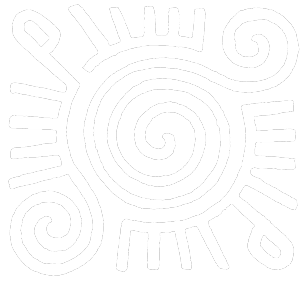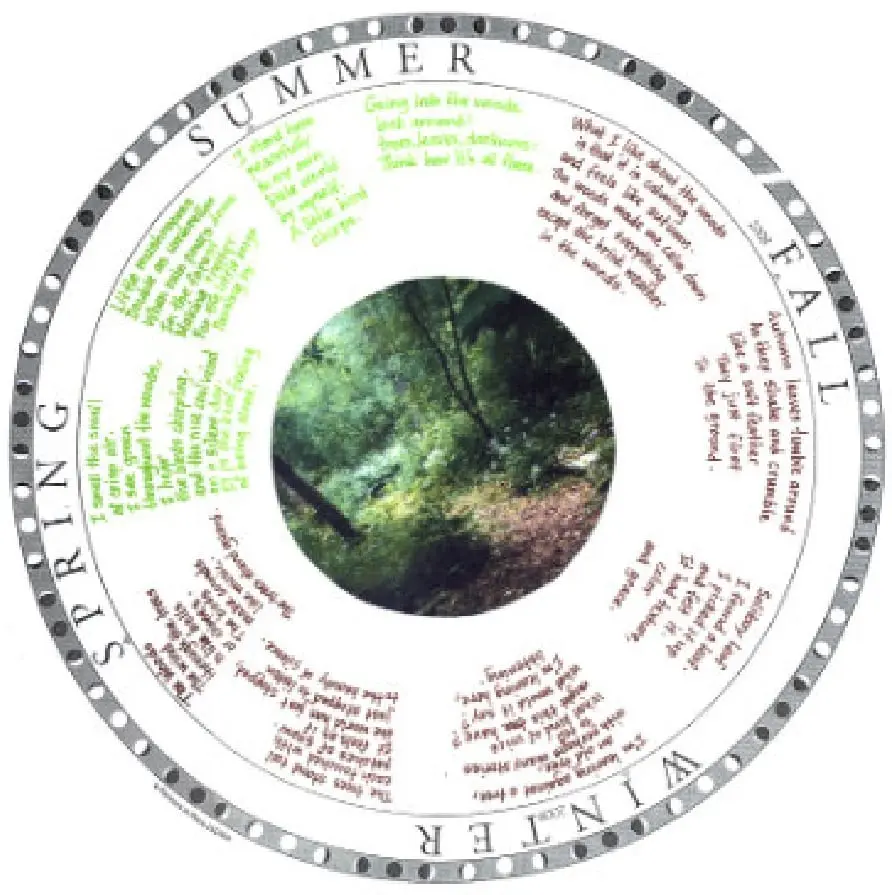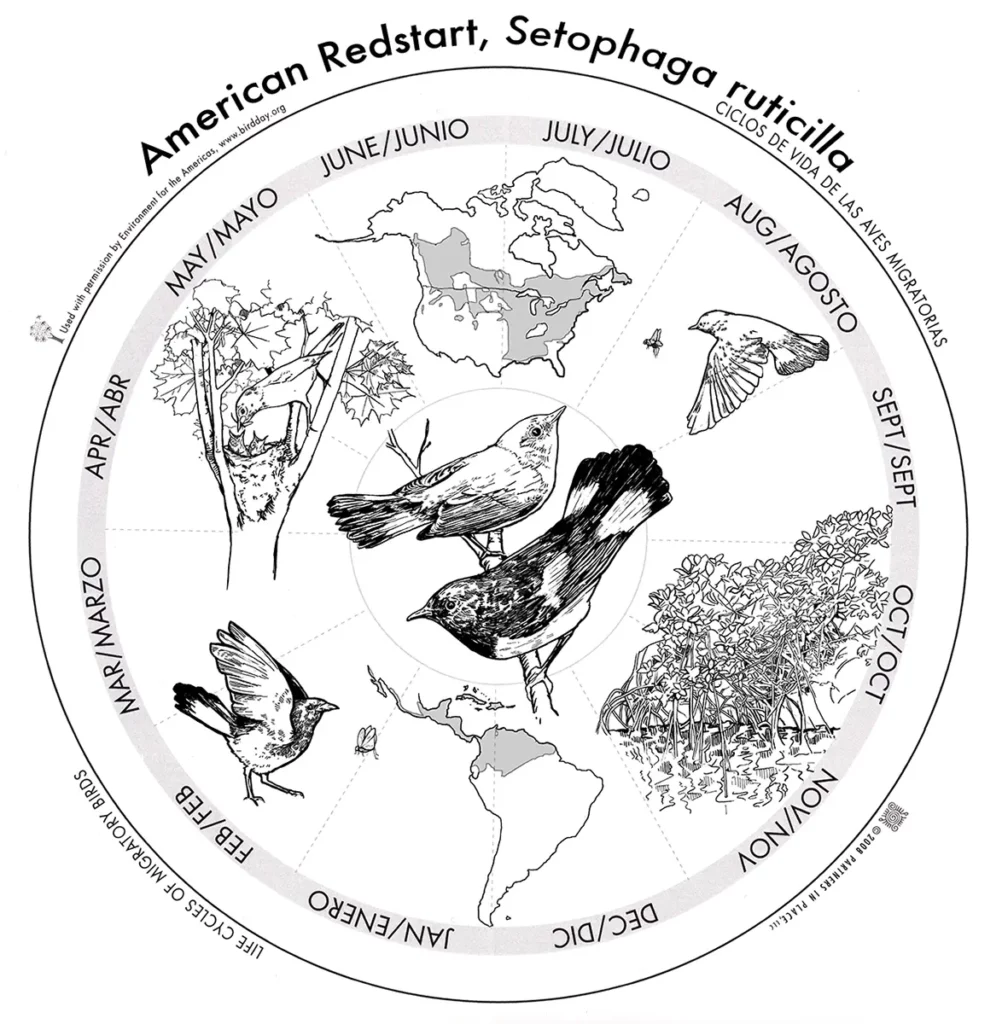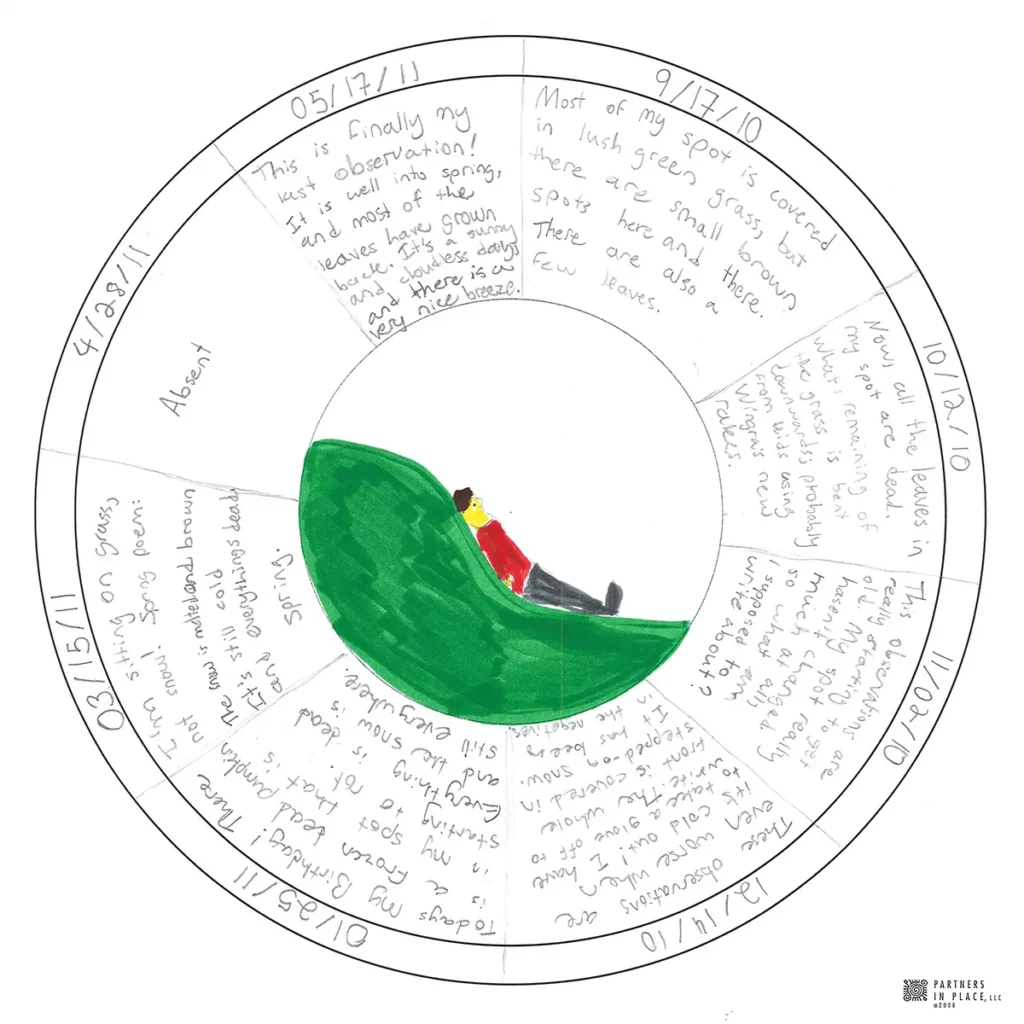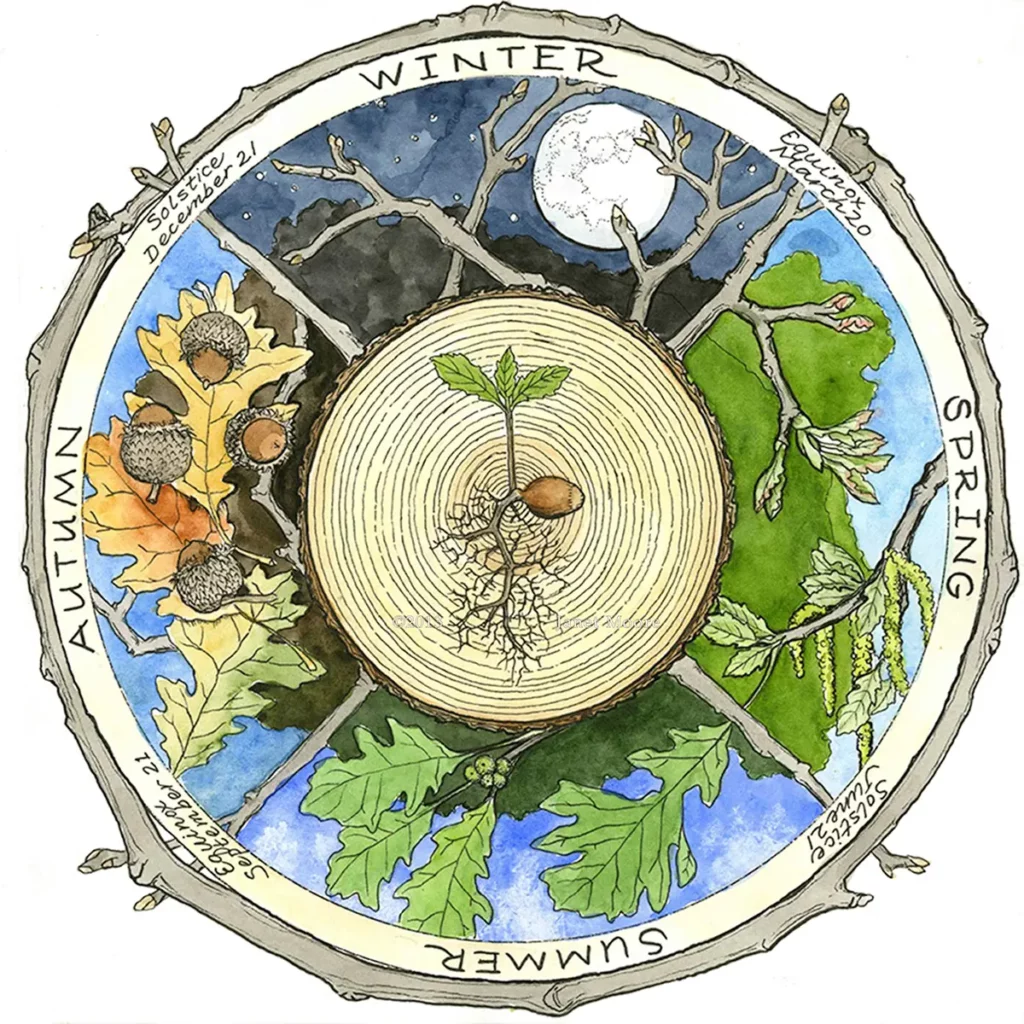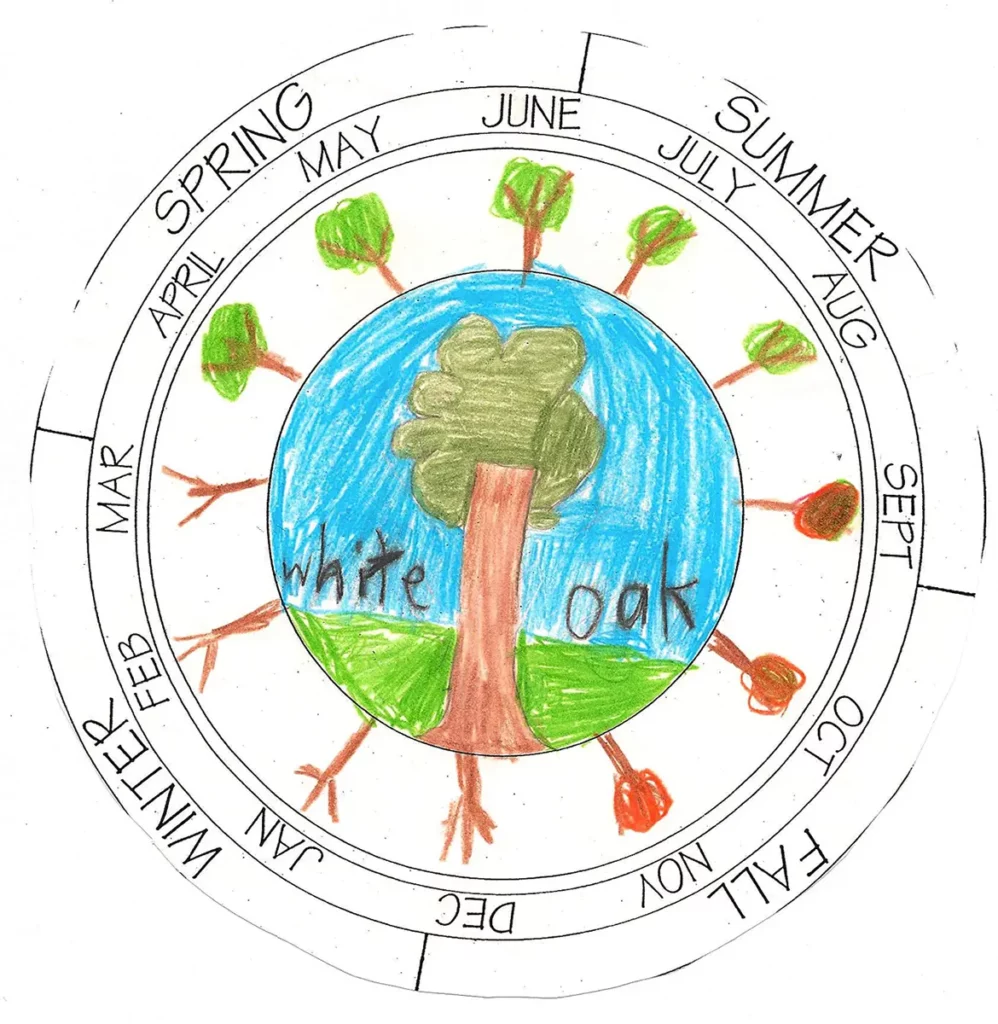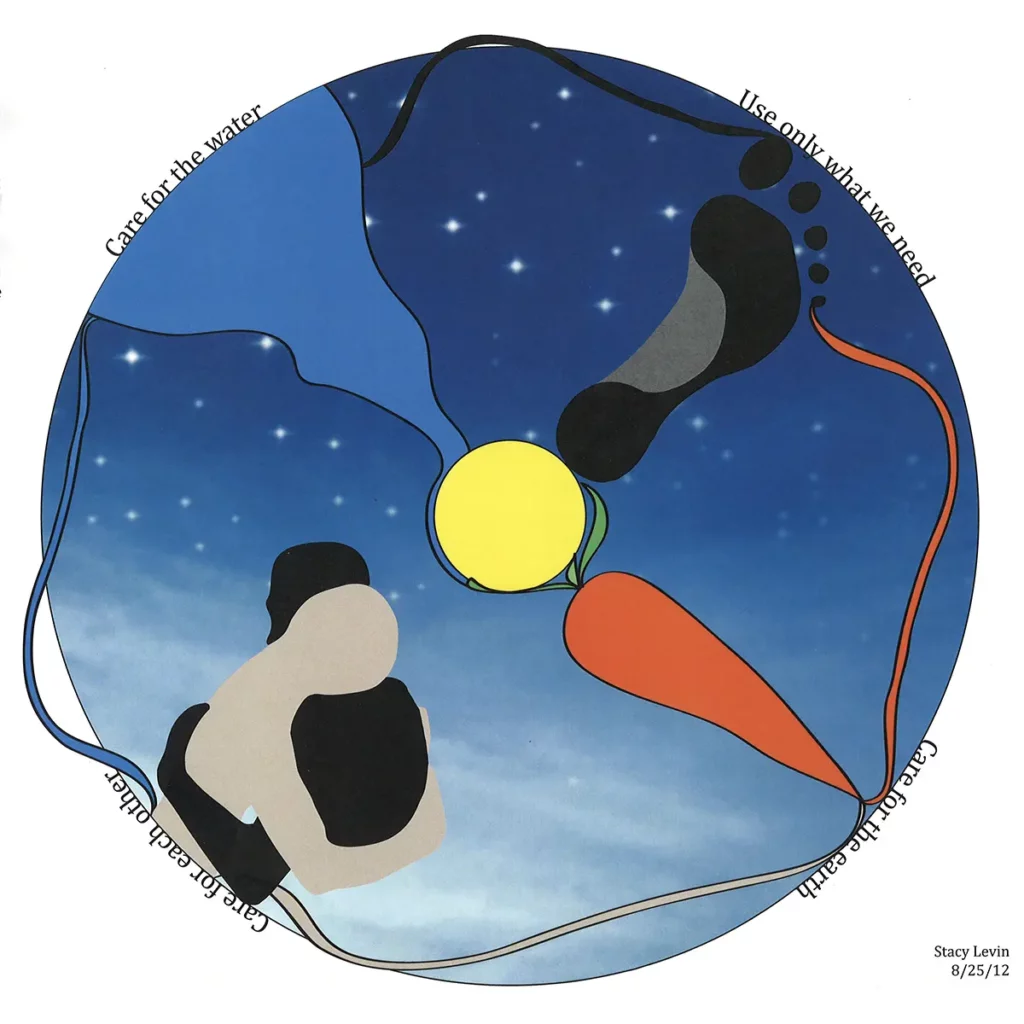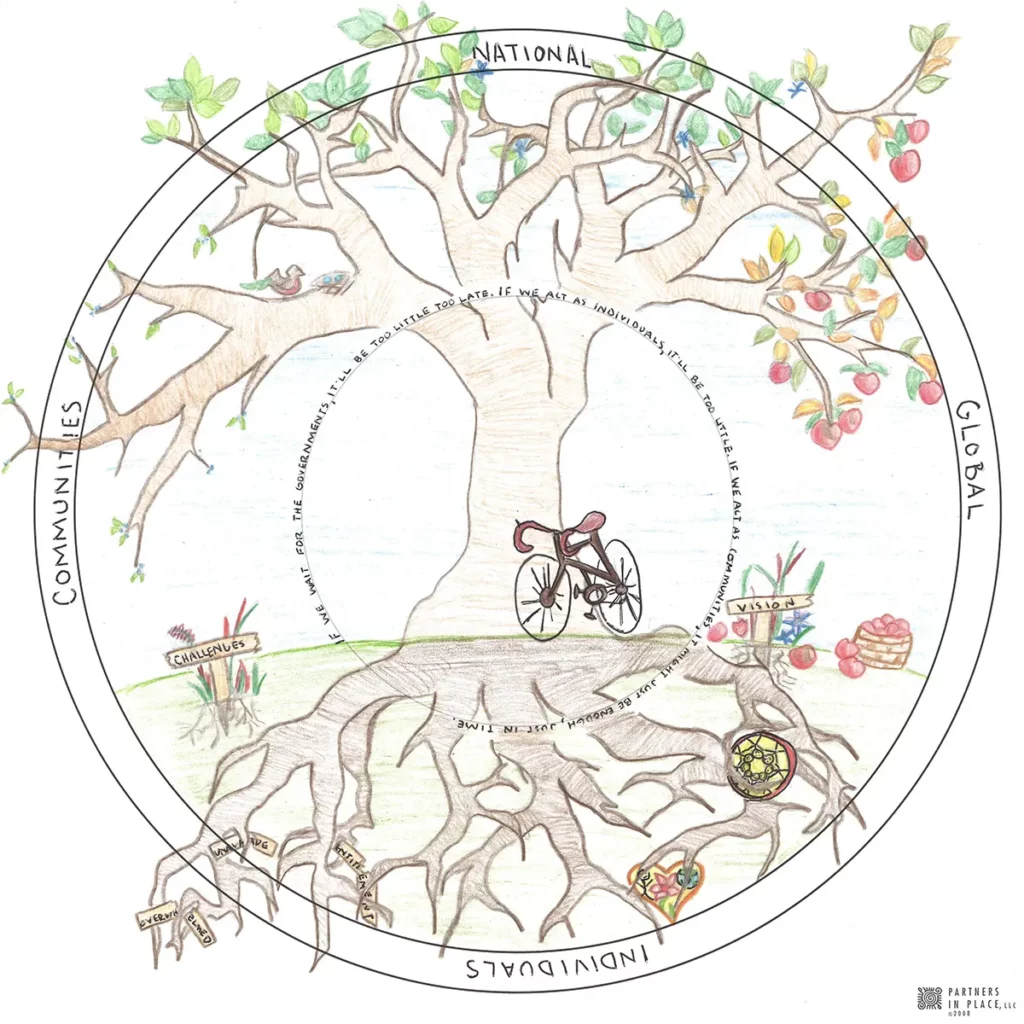Wheels of Time & Place
There is surely something magic about a circle, the way it influences us to be both grounded and expansive at the same time. Most of us have been taught to think of the passing of time as linear, with one event following another in sequence by day, by month, by year. Placing the same events in a circle helps us discover patterns and use them to communicate about what is really important to us.
The Wheels of Time and Place is a set of blank circular journals that you use to explore the glorious details of a place. Simple and endlessly versatile, they can be adapted for a variety of time frames, places, and ages to create a unique record of your experiences in nature. In creating your own wheels using the blank templates provided, you pay routine attention to cycles of day and night, phases of the moon, passing of the seasons, and your own growth and learning.
Whatever landscapes you experience — urban, suburban, rural, or wild — the practice of using the wheels helps you use all of your senses to observe the world around you and seek to live more consciously within it – rather than simply on it.
Because the wheel is round, you may begin any time you are ready — change of season, new moon, birthday, holiday, new beginning, or any other inspired moment. The best time to begin is of course… Now!
The original Wheels of Time and Place toolkit by Anne Forbes is out of print. However, the contents of the toolkit are available for download below at no cost. Please use them and share them with others! For those who are new to the Wheels, please enjoy learning about them as an inspiration to observe and reflect on your life and the world around you.
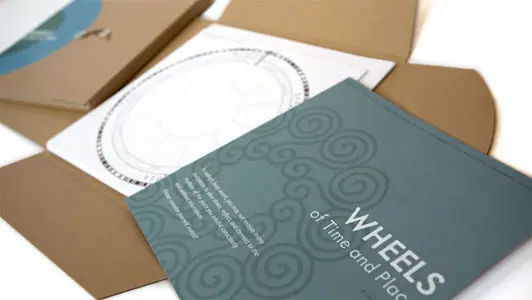
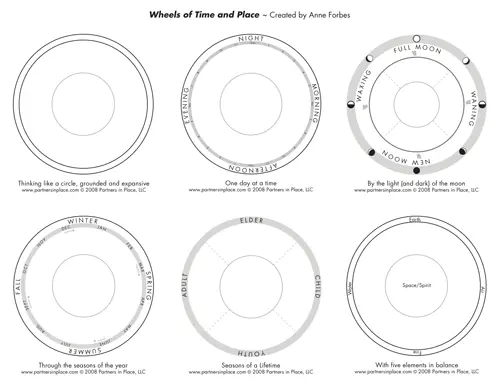
Download Wheel of Time & Place materials
The original Wheels of Time and Place toolkit by Anne Forbes is out of print. However, the contents of the toolkit are available for download below at no cost. Please use them and share them with others! For those who are new to the Wheels, please enjoy learning about them as an inspiration to observe and reflect on your life and the world around you.
For the circular Wheel templates, you can download these as PDF files to print at home, or better yet, enlarge at a copy shop to 12-inch in diameter, 24-inch diameter, or any size you choose:
- Wheels of Time & Place 10-page instruction book
- A Taste of Wheels: Six small Wheels on one page
- One Day Template: 24 hours
- Lunar Month Template: full moon, waning moon, new moon, waxing moon
- Year Template: through the months and seasons of the year
- Lifetime Template: child, youth, adult, elder
- Five Elements Template: earth, air, fire, water, space-spirit-center
- Blank Wheel or Mandala Template (open circle)
- Blank Wheel or Mandala Template (divided into quarters)
- One Year with Moon Phases: 2020
Many users over the years enjoyed the Wheel of the Year with Moon Phases aligned for each day in the outer ring for the years 2010-2020. If you print the outdated copy above to use as is or alter the outer ring on your own, please note: The moon orbit is not round! Thus, the moon phases don’t match up perfectly with the dates when put on a circle.
Instructions
Phenology Wheels: Earth Observation Where You Live article
Article by Anne Forbes, published in Earthzine, a publication of the IEEE Oceanic Engineering Society. February 14, 2011. (Resources and links updated May 2024)
Examples
Migratory Bird Wheel
Sit Spot
Trees as Teachers: Oak Wheel #1
Professional Artist Janet Moore captures the phenology and life cycle of trees by exploring their symmetry and form through the seasons of a year.
(Used with permission)
Trees as Teachers: Oak Wheel #2
Reflective Wheel: Water
Students in the Sustainability Leadership graduate program at Edgewood College created Reflective Wheels to explore, summarize, and synthesize their learning.
“This mandala interweaves the three main ethics of permaculture – care of the earth, care for each other, and use only our fair share – and also includes care for the water as a most precious resource and the inspiration of the full moon at the center.”
